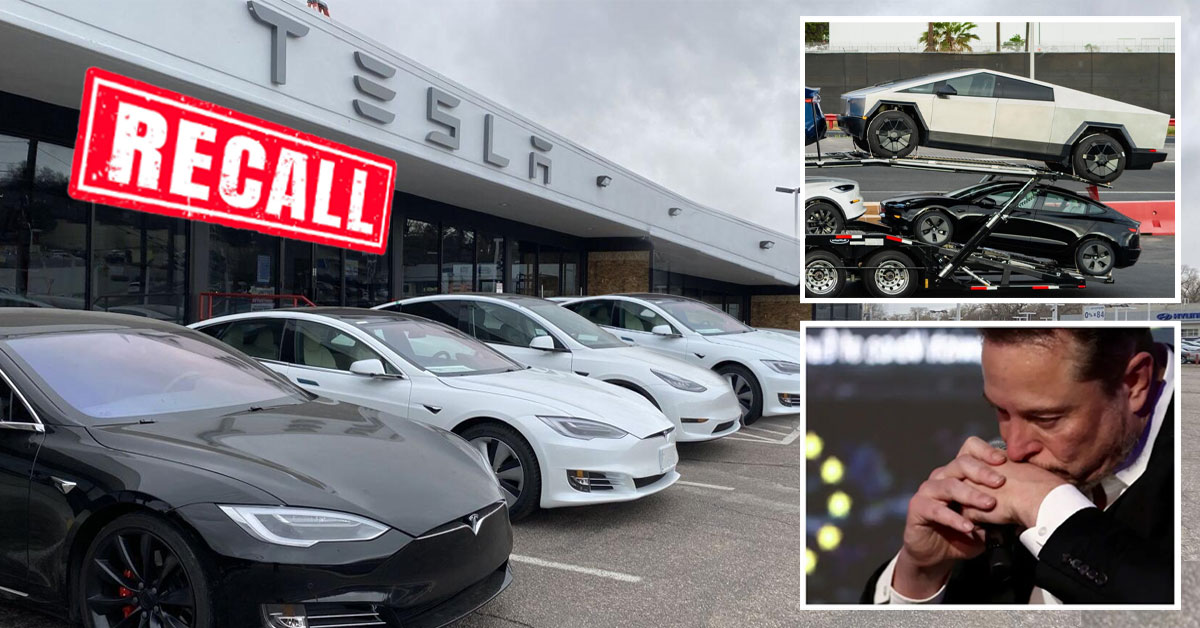Tesla Recalls Over 2 Million Cars For Warning Lights

Tesla has undertaken a substantial recall affecting a substantial segment of its U.S. vehicle fleet, involving more than 2.19 million vehicles. This recall, mandated by the National Highway Traffic Safety Administration (NHTSA), responds to a safety issue highlighted by the agency—specifically, the utilization of undersized fonts in crucial warning lights on the instrument panel. The initiative aims to rectify this identified concern, ensuring that warning indicators meet the prescribed size standards for optimal visibility and adherence to safety regulations.
The automotive industry, an intricate tapestry of safety regulations, technological advancements, and shifting consumer demands, perpetually engages in a delicate balance between innovation and risk mitigation. At the forefront of ensuring safety within the United States is the National Highway Traffic Safety Administration (NHTSA), an agency with a legacy dating back to its establishment in 1966. Tasked with a comprehensive mandate, the NHTSA plays a pivotal role in shaping safety standards for vehicle design, performance, and technology.
Within this multifaceted regulatory framework, effective communication between vehicles and drivers emerges as a cornerstone of safety protocols. This communication is facilitated through a spectrum of visual cues, audible alerts, and tactile feedback mechanisms. Central to this interaction are the dashboard warning lights, symbols that serve as a visual language conveying critical information about potential malfunctions, system failures, or operational states. The NHTSA meticulously regulates the size, color, and placement of these warnings, ensuring they remain discernible by drivers under diverse lighting conditions and within varying levels of attention.
However, the spotlight has recently shifted to Tesla, a prominent player in the electric vehicle (EV) market, as the company faces scrutiny over its compliance with these safety standards. The recall of 2.2 million Tesla EVs underscores the significance of adhering to established communication protocols within vehicles. This recall not only impacts Tesla as a company but also prompts a broader examination of the intricate relationship between innovation, regulatory compliance, and consumer safety in the automotive sector.
Delving deeper into the intricacies of the NHTSA’s regulations, it becomes evident that the agency’s oversight extends beyond mere formality. The standards set by the NHTSA regarding dashboard warning lights are designed with a meticulous understanding of human-machine interaction. They aim to ensure that drivers receive crucial information in a timely and comprehensible manner, thereby enhancing overall road safety. In this context, the recall of Tesla’s vehicles signals a potential deviation from these standards, prompting a critical reevaluation of the interplay between cutting-edge automotive technologies and established safety norms.
The recall itself serves as a stark reminder of the complexities inherent in the automotive industry’s pursuit of innovation. As vehicles become increasingly sophisticated, incorporating advanced technologies such as autonomous driving features and intricate communication systems, the challenges for regulatory bodies like the NHTSA escalate. Striking the right balance between fostering innovation and safeguarding consumers necessitates a continual reassessment of safety standards to keep pace with the rapid evolution of automotive technologies.
Tesla’s recall also raises pertinent questions about the adaptability of regulatory frameworks in the face of technological leaps. The NHTSA, like other regulatory bodies, grapples with the need to anticipate and address emerging challenges posed by novel technologies. The recall sheds light on the ongoing dialogue between regulators and industry leaders, emphasizing the need for a proactive approach to address potential safety concerns before they escalate into widespread issues affecting millions of vehicles.
In the broader context of automotive innovation, the recall serves as a pivotal moment for industry stakeholders to reevaluate their approaches to safety and compliance. It prompts manufacturers to reflect on the integration of cutting-edge technologies within vehicles and their alignment with established safety standards. Furthermore, it underscores the importance of a collaborative effort between regulators, manufacturers, and other industry players to foster an environment that encourages innovation while prioritizing the safety and well-being of consumers.
The Tesla recall also reverberates through the electric vehicle sector, a segment experiencing rapid growth and transformation. As EVs become more mainstream, their unique technological landscape introduces new challenges for safety regulators. The recall of 2.2 million Tesla EVs prompts a closer examination of the specific safety considerations associated with electric vehicles, including their intricate battery systems, autonomous driving capabilities, and communication interfaces.
Beyond the immediate implications for Tesla, the recall sparks a broader conversation about the role of consumer awareness and education in ensuring vehicle safety. As automotive technologies evolve, it becomes imperative for manufacturers to not only comply with regulatory standards but also actively engage in transparent communication with consumers. Educating drivers about the functionalities of advanced features, potential risks, and the importance of prompt responses to recalls enhances the overall effectiveness of safety measures.
In conclusion, the recall of 2.2 million Tesla vehicles serves as a significant episode in the ongoing narrative of innovation, regulation, and safety in the automotive industry. It prompts a reassessment of the delicate balance between pushing technological boundaries and ensuring adherence to established safety standards. As the automotive landscape continues to evolve, stakeholders must collaborate to navigate the complexities of emerging technologies, fostering a future where innovation and safety coexist harmoniously on the roads.

